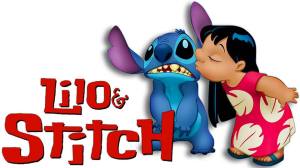In watching both the 2002 feature film and numerous episodes of the 2004 TV series of Lilo and Stitch, we can see the effects of post colonialism that take place in this Hawaiian based cartoon. Following the adventures of the two main characters on the rural island of Kauai, the Hawaiian culture and traditions are heavily incorporated into the cartoon, which, despite being an American conception by Disney, celebrates the differences that are found between the geographically remote Hawaii and the distant American mainland. Lilo and Stitch sets out to romanticize this view of Hawaii while also presenting the challenges it faces due to the influence of American mainland imperialism that are yet to cultivate it in it’s young existence as a US state. The makeup of the characters is also multi-ethnic, portraying Native Hawaiins with a traditional grasp on life as well as non-native Hawaiians, particularly white characters, who bear more similarities to that of the mainland American.
Othering is consistent when applied to the native character’s experiences with non-natives, for example, Lilo’s enemy and resulting antagonist, Mertle, is white skinned with red hair and blue eyes having wealthy parents with middle class interests such as becoming a real estate agent. Her portrayal as a rival figure is supported by these socially privileged traits and mainland background that contrast with Lilo’s orphan status as a child in the care of her sister who struggles to find employment. The African-American social worker Cobra Bubbles, as well as the white hotel inspector Mr. Cooper, are portrayed as unsympathetic and unaccustomed professionals who are not understanding of the characters’ situation while Lilo’s teacher Moses Puloki is portrayed as patient and empathetic. Mr. Jameson meanwhile is a wealthy white businessman who owns many businesses on the island, but is nonetheless an ally to Lilo and Nani, providing Nani with employment and being the father of Keoni, a boy who Lilo takes a liking to.
The cartoon also pokes fun at the white tourists who are found visiting the island. One notable character of mockery here is the severely sunburnt and obese tourist who is little more than a running gag throughout the film and the TV series. Other tourists are seen to be unadapted to their location and quite often oblivious to what is going on around them.
Rather than engage in cultural clashes and tensions, the characters of Lilo and Stitch are willing to accept both Hawaiian and mainland American culture. Lilo is a fan of Elvis Presley, for example and in an attempt to make Stitch a “model citizen” under Bubbles’ orders, models him off of Elvis, while giving him what appears to be a ukelele although she refers to it as a guitar. She also takes him surfing. Mr Jameson, has decided to follow the cultural traditions of Hawaii by naming his son ‘Keoni’. As extraterrestrial beings, Dr. Jumba Jookiba and Pleakly have also decided to integrate with humans, after being left on Earth when fired from their initial mission to capture Stitch. Having once seen the planet Earth as nothing more than an important mosquito preserve they have since become part of Lilo’s family. The sugar refineries of Kauai as well as the presence of sugar crops also appear in the cartoon. These are an important post colonial symbol of the 18th century British colonization of Hawaii, in which sugar production was industrialised.
Lilo and Stitch is arguably a deviation from the typical portrayal of Hawaii. In many instances, the onscreen portrayal of Hawaii, will be from the mainland American discourse. This will often be romantic comedies that feature the main characters being on vacation, and engaging in tourist activities (Forgetting Sarah Marshall) or in some cases, non-natives living on Hawaiian islands, such as 50 First Dates, or otherwise living metropolitan lifestyles such as in Hawaii 5.0. A significant number of dark movies and TV series in the crime/thriller/war category have quite ironically been based in Hawaii as well for example Although heavily romanticizing it, Lilo and Stitch aims to portray the domestic lifestyles of the native islanders as they attend school and search for employment, while under the cultural threat from a growing tourist industry. Feeling it important to preserve their Hawaiian culture, Lilo and Nani often choose to stick to it’s traditions. In the film, a recurring saying “Ohana means family”, is used by Lilo to remind Nani why Stitch should remain with them and that family members must always be remembered. In another such episode of the series, Nani feels it important to fulfill the tradition of “Aloha” in giving newcomers a hospitable greeting

